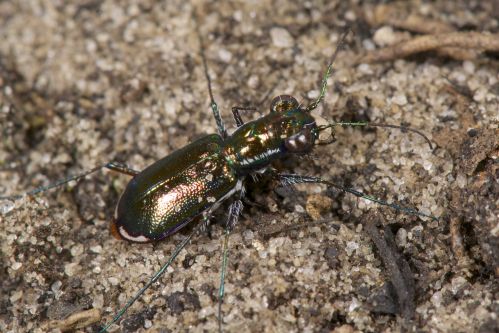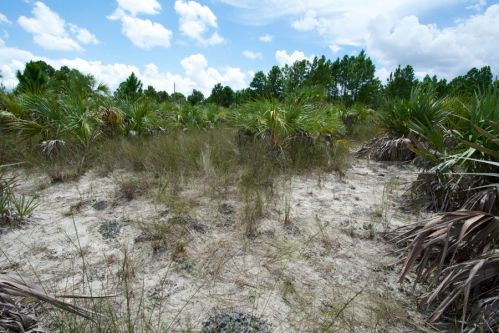For some of Florida’s most reclusive residents, early October was a wild relief. Consider the Miami tiger beetle, “actually a beautiful little bug," according to the U.S. Fish and Wildlife Service. The Miami tiger beetle minds its own business in South Florida’s weakening pine rocklands and now developers will be expected to mind theirs, too, the FWS says.
 In the first week of October, the FWS extended federal protections under the Endangered Species Act to the Miami Tiger Beetle and a mussel found mostly in the Suwanee River Basin. The Service also proposed safeguards for four rare plants isolated in South Florida and the Lower Keys.
In the first week of October, the FWS extended federal protections under the Endangered Species Act to the Miami Tiger Beetle and a mussel found mostly in the Suwanee River Basin. The Service also proposed safeguards for four rare plants isolated in South Florida and the Lower Keys.
The tiger beetle had the shortest wait for federal action. Until 2007, the shiny bug with strong jaws and remarkable leg speed was considered extinct until it was rediscovered near Zoo Miami.
“It’s a huge relief to know that this tiny, mighty creature will now be around for years to come,” said Jacki Lopez, Florida director at the Center for Biological Diversity, which sued the government in 2011 to speed up action on a backlog of endangered species.
Endangered status means a species is at risk of extinction in all or a significant portion of its habitat now or in the future.
Swift action for the tiger beetle was vital, Lopez said, because of a strip mall and a theme park that were planned for the creature’s pine rocklands habitat and hunting grounds. The Center joined other eco groups to file an emergency petition to the FWS for endangered status in 2014.
“Only two small populations … still survive in its pine rocklands habitat,” FWS Southeast Regional Director Cindy Dohner said in a statement. “We are working closely with prospective developers and key stakeholders in Miami-Dade County to ensure that the Miami tiger beetle is considered in development or management plans.”
 The Florida pineland crabgrass, Florida prairie clover, pinelands sandmat, and Everglades bully are joining several endangered species in the pine rocklands and South Florida. The bully was pushed around by the Feds for ESA protection since 2004, relatively short considering the pineland crabgrass was first identified for ESA protection in 1975.
The Florida pineland crabgrass, Florida prairie clover, pinelands sandmat, and Everglades bully are joining several endangered species in the pine rocklands and South Florida. The bully was pushed around by the Feds for ESA protection since 2004, relatively short considering the pineland crabgrass was first identified for ESA protection in 1975.
Under the ESA, plants, Lopez said, are treated “as second-class citizens.”
“At least these four plants are finally getting the protection they need to survive and recover,” Lopez said in an email press statement.
But development in the rocklands looms. In 2014, a Palm Beach builder announced plans to build a shopping center, Coral Reef Commons; and 20th Century Fox is proposing a theme park near Zoo Miami, according to Miami Today.
The pine rocklands are not designated federally as critical habitat — a ruling that is not expected before next September, the FWS said. The habitat once spanned 185,000 acres in Miami-Dade but only 2 percent remains outside of Everglades National Park, according to Save the Pine Rocklands.
The FWS said potential builders “are encouraged” to develop Habitat Conservation Plans that can allow for certain types of development with “adequate conservation measures to avoid and minimize the impacts” to endangered species.
So far for the Center for Biological Diversity, 176 plants and animals have received federal protections as a result of its 2011 agreement with the FWS.
» Photos via beetlesinthebush.wordpress.com; Florida Fish and Wildlife Conservation Commission.
Outside
Bitcoin mining emissions in China will hit 130 million tonnes by 2024 https://t.co/w6He7so8N2 pic.twitter.com/qYUDtBdeRK
— New Scientist (@newscientist) April 9, 2021
The Gunk Report
For the Blue-Green Algal Bloom Weekly Update from the Florida Department of Environmental Protection, tap here. For DEP's Algal Bloom Sampling Map, tap here.
What, me worry?
» "PLAYING WITH SHARKS," which recently premiered at the Sundance Film Festival, documents diving legend Valerie Taylor.